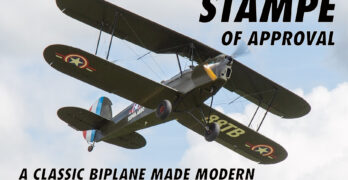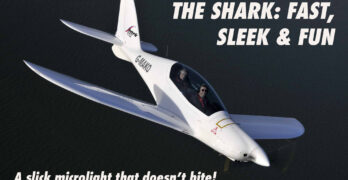I’d seen the full-size Stampe SV4-RS replica at AERO a few weeks previously, and it really put a hook in me. I was fortunate enough to fly a Stampe several years ago and was very impressed—it being greatly superior to the DH Tiger Moth, with which it is often confused. Of course, even the youngest Stampe is still 69 years old, and they require a lot of maintenance. Spares for the original Renault engine in particular are getting rare, the strength of the wooden fuselage can be compromised from decades of oil being splattered across it and the metal fixtures and fittings are far from the first flush of youth. These are old aircraft and they require a lot of looking after. Indeed, the reason why such aircraft (and cars and motorbikes of a similar vintage) are often referred to as “collector’s machines” is that you often need someone following along behind collecting up all the pieces that have fallen off!
Flight Review: Riding the Shark!
“You never get a second chance to make a first impression” is a wise old saw, and my initial impressions of the Shark were all very positive. Some aircraft look like they’re moving even when they’re standing still, and the Shark definitely falls into this category. From the tip of the sharp-looking spinner to the top of the swept-back fin, it’s easily the sexiest-looking microlight I’ve ever seen. Indeed, my first thought is that it looks rather like a scaled-down PC-21.
Walking around the aircraft, I note that the 100-hp Rotax 912S is very tightly cowled, and that access to the engine bay is adequate, but not outstanding, as quite a lot of Camloc fasteners need to be undone to remove the entire cowling for a full engine inspection. There’s a large electrically actuated NACA scoop in the bottom half which supplies air to the oil cooler and radiator, and small intakes in the top half on both sides of the spinner for cooling the cylinders.



